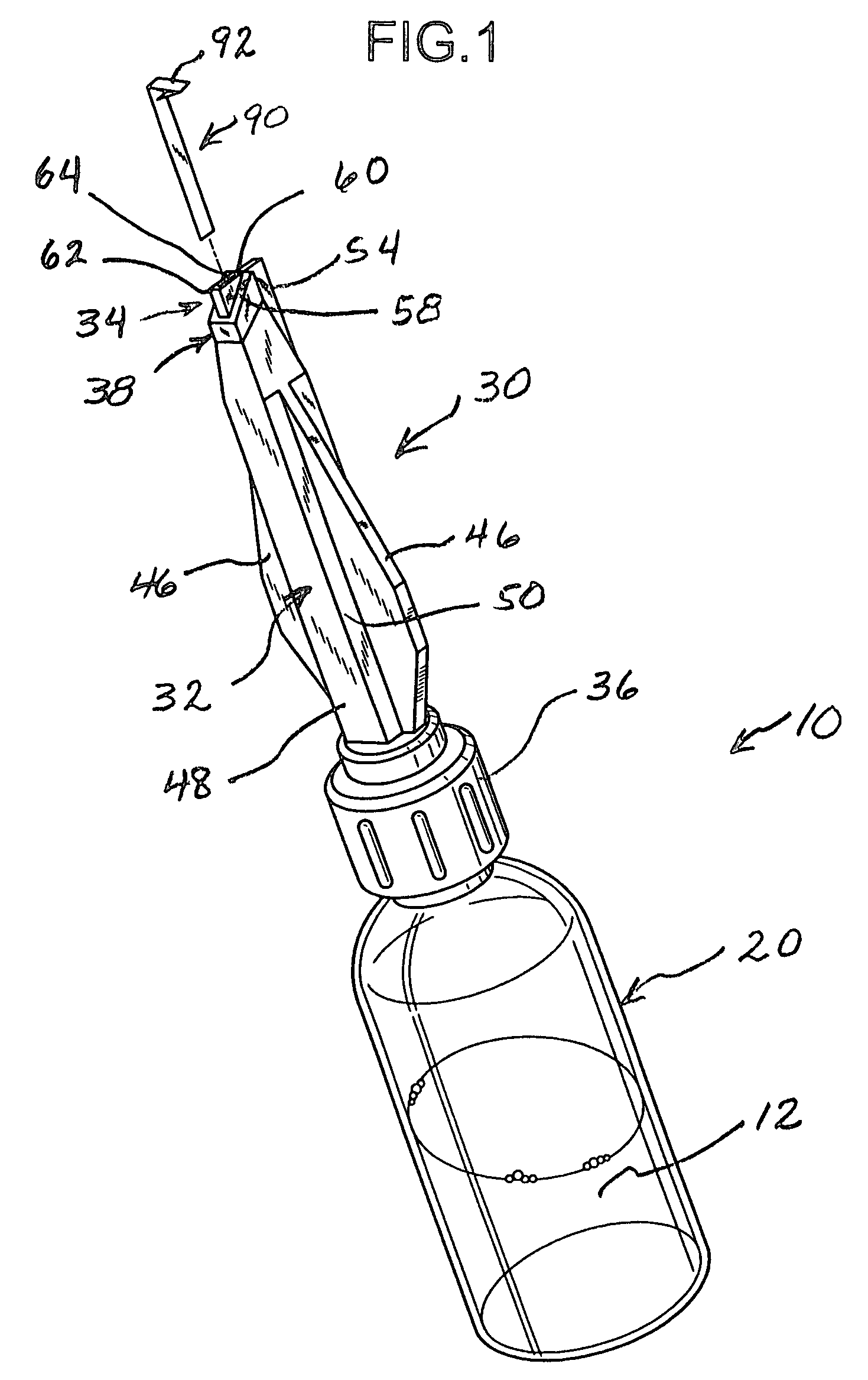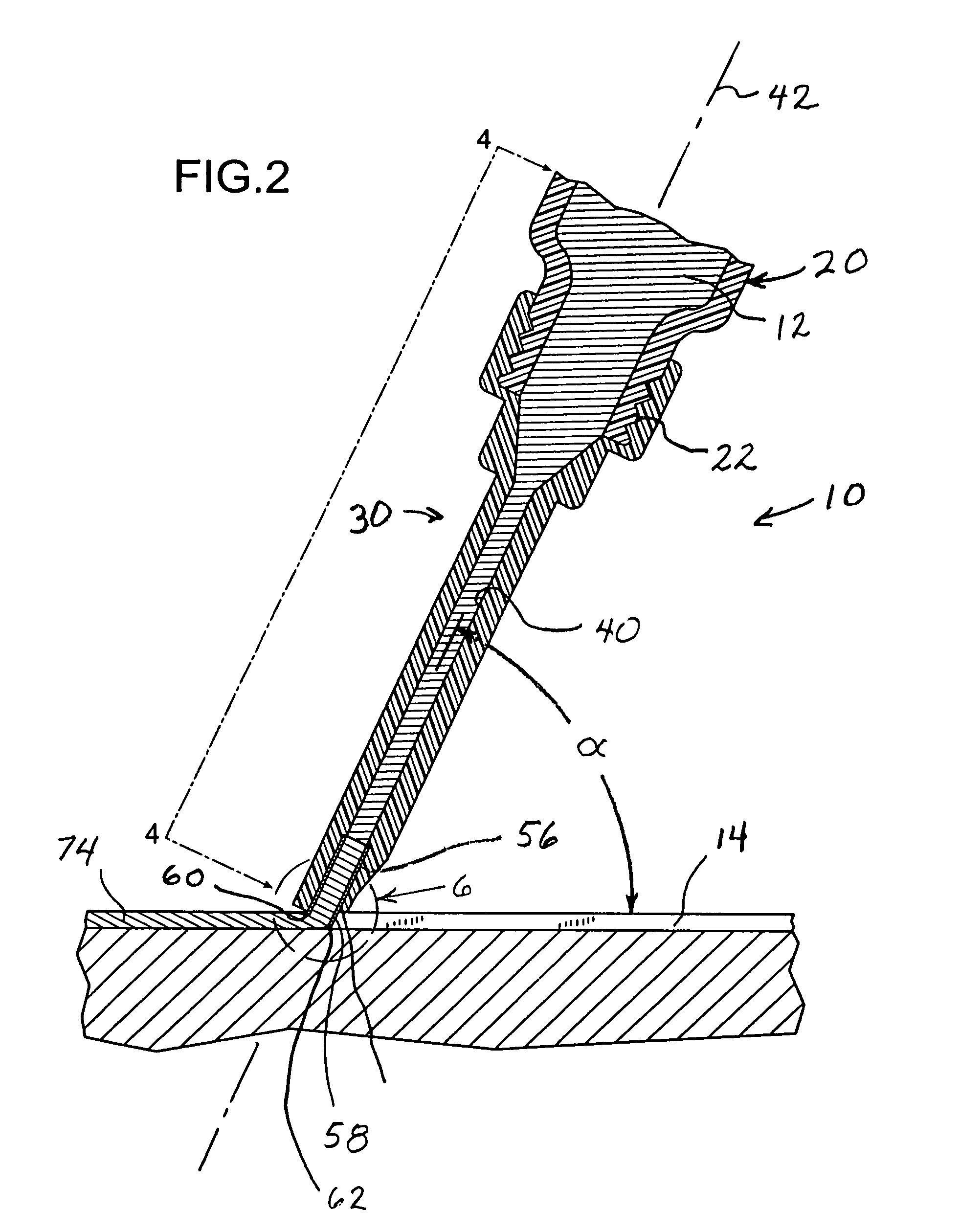Seam sealer applicator
a sealer and applicator technology, applied in the field of sealer applicators, can solve the problems of deteriorating the bond between the flooring and the underlayment, separating the flooring, and a particularly vulnerable location of the seal between adjacent sheets of flooring
- Summary
- Abstract
- Description
- Claims
- Application Information
AI Technical Summary
Benefits of technology
Problems solved by technology
Method used
Image
Examples
Embodiment Construction
[0041]FIG. 1 illustrates a seam sealer applicator 10 for dispensing chemical sealant adhesive in liquid form, indicated at 12, into seams 14 between adjacent sheet of flooring 16 and 18, as illustrated in FIGS. 2 and 7-10. As shown in FIG. 1, the seam sealer applicator 10 is comprised of a hollow, plastic reservoir 20, which is preferably a hollow plastic bottle having a threaded neck 22, visible in FIG. 2. The threaded neck 22 of the reservoir bottle 20 forms an outlet from the reservoir 20.
[0042]The applicator 10 is also comprised of a seam sealer applicator tip 30 which has a hollow, rigid, plastic body 32 and a narrow, hollow stainless steel insert 34. The plastic body 32 has a proximal, upstream end 36 formed as an internally threaded socket that screws onto the threaded neck 22 of the reservoir bottle 20, and an opposite, downstream, distal end 38. Because it is hollow, the plastic body 32 forms a flow duct 40 therethrough that defines a straight, linear flow path that is at l...
PUM
 Login to View More
Login to View More Abstract
Description
Claims
Application Information
 Login to View More
Login to View More - R&D
- Intellectual Property
- Life Sciences
- Materials
- Tech Scout
- Unparalleled Data Quality
- Higher Quality Content
- 60% Fewer Hallucinations
Browse by: Latest US Patents, China's latest patents, Technical Efficacy Thesaurus, Application Domain, Technology Topic, Popular Technical Reports.
© 2025 PatSnap. All rights reserved.Legal|Privacy policy|Modern Slavery Act Transparency Statement|Sitemap|About US| Contact US: help@patsnap.com



